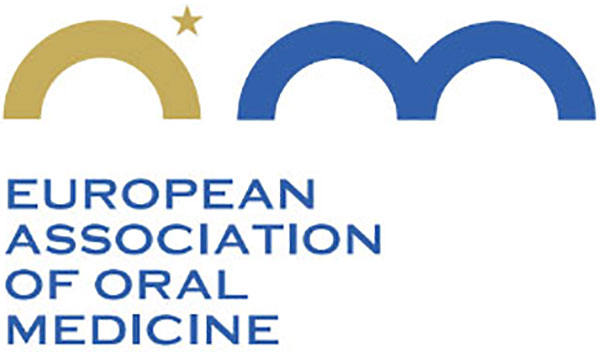Oral Malodour
Definition
Oral malodour (halitosis or breath odour; from the Latin for breath, Halitus), is a fairly common complaint that affects personal relationships and quality of life. Though the true prevalence is unclear, up to 30% of adults over 60 years of age report either being conscious of their oral malodour, or having been told by others they have it. In most cases, oral malodour is related to tongue microbial metabolism of local debris.
Clinical presentation
Oral malodour can be difficult to perceive by the patient. There is no current objective method of self-assessing the degree of oral malodour. In some cases, patients present halitophobia, a self-conviction to have bad breath not supported by objective analysis. Many patients adopt a number of behavioural measures to minimise their perceived problem, such as using chewing gums, mints, mouthwashes or sprays designed to reduce malodour, cleaning their tongue repeatedly, covering their mouth when talking, avoiding or keeping a distance from other people, and avoiding social situations.
Aetiopathogenesis
The basic causes of oral malodour are now fairly well understood. There are different degrees of oral malodour, and some situations are part of normal physiology.
1. Morning breath
When oral malodour is common on awakening (so called morning breath), this is usually a consequence of low salivary flow and stagnation during sleep. This complaint can be higher in mouth breathers and may be exacerbated by other oral causes of malodour. If this is the case, oral malodour may be readily rectified by eating, tongue brushing, tooth brushing and rinsing the mouth with fresh water. Hydrogen peroxide rinses will also eliminate this odour.
2. Exogenous malodour
Various foods such as garlic, onion, durian, cabbage, Brussel sprouts, cauliflower or raddish, spices such as in curries, as well as habits such as tobacco or alcohol can cause bad breath. Avoidance of these foods and habits is the best mean of prevention.
3. True oral malodour (endogenous malodour)
When oral malodour is not associated with the factors already described, it is most often a consequence of oral bacterial activity, typically from anaerobes. There are many reasons for this bacterial activity, first of all poor oral hygiene.
However, some bad breath seems to be associated with local pathological causes, such as gingivitis (especially ANUG), periodontal disease, infected extraction sockets, or other types of oral sepsis.
In some cases, other possibilities that favour oral malodour are the presence of residual blood post-operatively, debris under bridges or appliances, ulcers, dry mouth and putrefaction of postnasal mucus drip stagnating on the tongue.
The large surface of the tongue and its papillary structure retain a consistent number of food debris and are often the location of the micro-organisms implicated which are predominantly Gram-negative anaerobes, and include Porphyromonas gingivalis, Prevotella intermedia, Fusobacterium nucleatum, Bacteroides forsythus and Treponema denticola.
In many instances, these bacteria release chemicals that produce malodour, which include volatile sulphur compounds (VSC) such as hydrogen sulphide and methyl mercaptan, but also diamines like cadaverine and putrescine and short chain fatty acids (butyric, valeric and propionic).
Recently, Gram-positive bacteria have also been implicated since they can denude the available glycoproteins of their sugar chains, enabling the anaerobic Gram-negative proteolytic bacteria to break down the denuded proteins, resulting in the chemicals described above. On the other hand, the evidence for the implication of other micro-organisms, such as Helicobacter pylori, is scant.
Smoking may increase the production of some of these odiferous compounds and smoke itself contains thousands of volatiles.
In the absence of oral causes, systemic conditions may be responsible for oral malodour, including starvation, drugs causing dry mouth, drugs like cytotoxic agents, dimethyl sulphoxide, disulfiram, nitrites/nitrates and solvent abuse.
A part from local causes, the most common source of bad breath is the nose and its passages. Respiratory diseases that should be ruled out include nasal sepsis or foreign bodies, paranasal sinus infection, tonsillar infection, lower respiratory tract infection and infected tumours in the respiratory tract.
Other systemic causes of halitosis are less common and they include diseases such as diabetes mellitus and gastrointestinal diseases. Gastroesophageal reflux disease (GERD) may occasionally underlie halitosis, as well as hepatic failure and renal failure.
One interesting but rare situation is trimethylaminuria (TMAU; fish malodour syndrome). Trimethylamine (TMA) is present in the diet or can derive from the intestinal bacterial degradation of foods such as fish, eggs and some legumes rich in choline and/or carnitine. TMA is normally oxidized by the liver to the odourless trimethylamine-N-oxide (TMAO) which is then excreted in the urine. Inherited mutations of the gene for a liver drug-metabolizing enzyme (the flavin-containing monooxygenase 3 - FMO3)) accounts for a severe recessive form of trimethylaminuria in which there is impaired oxidation of TMA. The unoxidized TMA is excreted in urine, sweat, vaginal secretions, saliva and breath. Rarely a similar problem can arise due to congenital liver disorder with portal-systemic shunting due to an unusual intrahepatic vascular connection.
Halitophobia is a psychogenic condition. In these patients, no evidence of halitosis can be detected even with objective testing, and the condition may be attributable to a form of delusion of monosymptomatic hypochondrias.
Diagnosis
Diagnosis of this condition is mainly clinical. A full history must be collected together with a clinical examination. Assessment of the presence and degree of halitosis can be simply performed by smelling the exhaled air (organoleptic method) coming from the mouth and nose and comparing the two.
It is also possible to perform objective measurements of the responsible volatile sulphur compounds such as hydrogen sulphide and methyl mercaptan, using a halimeter (Interscan Corp., Chatsworth, CA, USA) or similar device. Other gaseous compounds however, are not detected, and therefore this is not entirely accurate.
The quality of the oral flora may also be assessed by using the BANA (benzoyl-argininenaphthyl-amide) test or darkfield microscopy. To exclude the rare situation of trimethylaminuria, analysis of urinary excretion of trimethylamine and of trimethylamine-Noxide usually by gas chromatography or direct proton NMR spectroscopy can be performed.
Management
There is no specific treatment, rather a workout of potential causes and a number of measures to be performed by the patient and the clinician. Diagnosing and treating any underlying dental, oral, ENT or medical cause must of course precede any other approach. Very importantly, patients must be educated to take regular meals and to avoid smoking and odiferous foods. Moreover, oral and denture/appliance hygiene is mandatory, to be performed by toothbrushing, flossing and by tongue cleaning with a scraper.
Oral antiseptics with chlorhexidine, cetylpyridinium chloride, triclosan, essential oils, or zinc chloride and chlorine dioxide are also effective at reducing malodour, in most cases for at least 3 hours. Chewing gum to increase salivation and using breath freshening preparations may be of help.
Only in recalcitrant cases, an empirical one week course of metronidazole 200mg three times daily can be useful.

Figure 1. Heavy coating of the tongue dorsum, composed by organic debris and bacterial biofilm which is the main source of oral malodor

Figure 2. Scanning microscopy of the tip fof a human filiform papilla. A thick composite bacterial biofilm is visible on the epiithelial surface.

Figure 3. With the “spoon test” the coating of the posterior tongue dorsum could be collected and assessed by the clinician to determine organoleptically the intensity of patient halitosis

Figure 4. Electrochemical analysis of VSC content of the mouth, pharingeal and nasal atmosphere obtained with the Interscan Halimeter® measuring device.
Further reading
1 Eli I, Baht R, Kozlovsky A, Rosenberg M. The complaint of oral malodor: possible psychopathological aspects. Psychosomatic Medicine1996; 58:156-9
2 Kleinberg I, Westbay G. Oral malodor Crit Rev Oral Biol Med 1990; 1:247-9
3 Loesche WJ, Kazor C. Microbiology and treatment of halitosis. Periodontol 2000 2002; 28:256-9.
4 Morita M, Wang HL. Association between oral malodor and adult periodontitis: a review.J Clin Periodontol 2001; 28:813-9
5 Rosenberg, M. Clinical assessment of bad breath: Current concepts. J Am Dent Assoc 1996; 127:475-82
6 Scully C, El-Maaytah M, Porter S, Greenman J. Breath odor: etiopathogenesis, assessement and management. European Journal of Oral Sciences 1997; 105:287- 93

